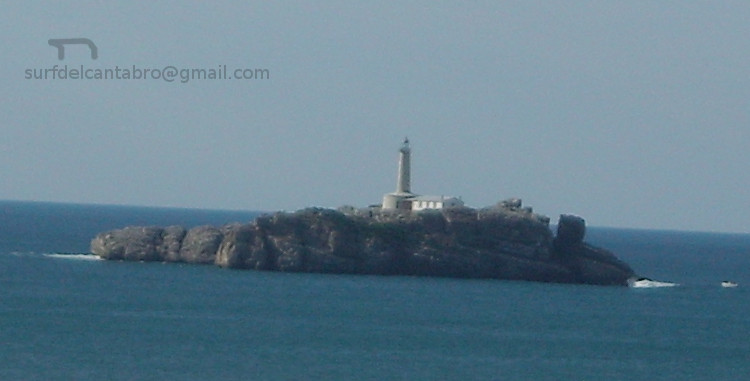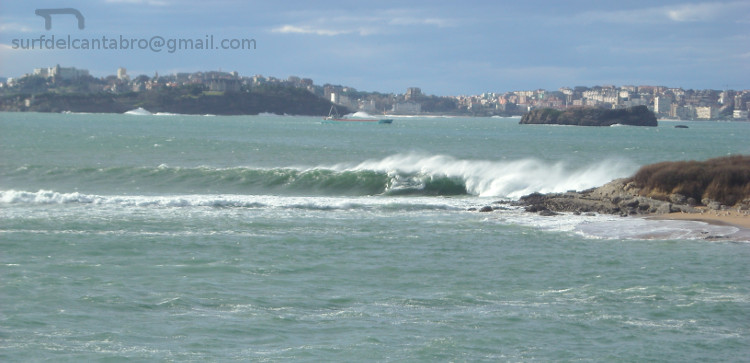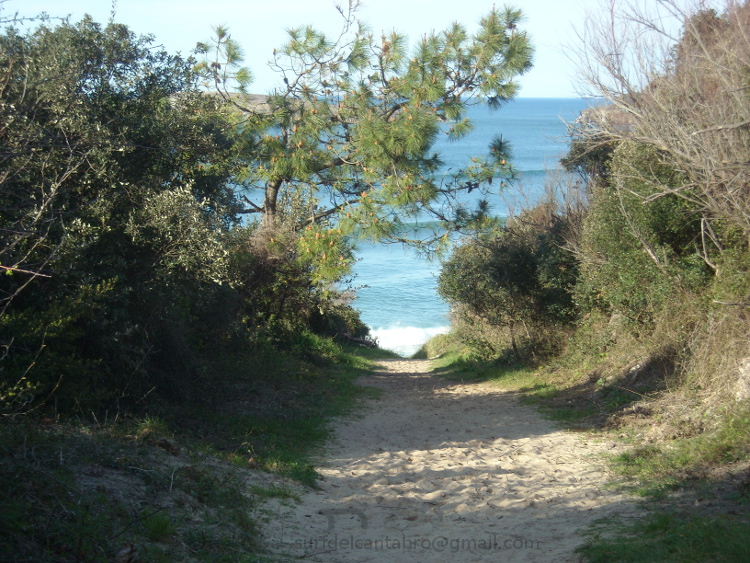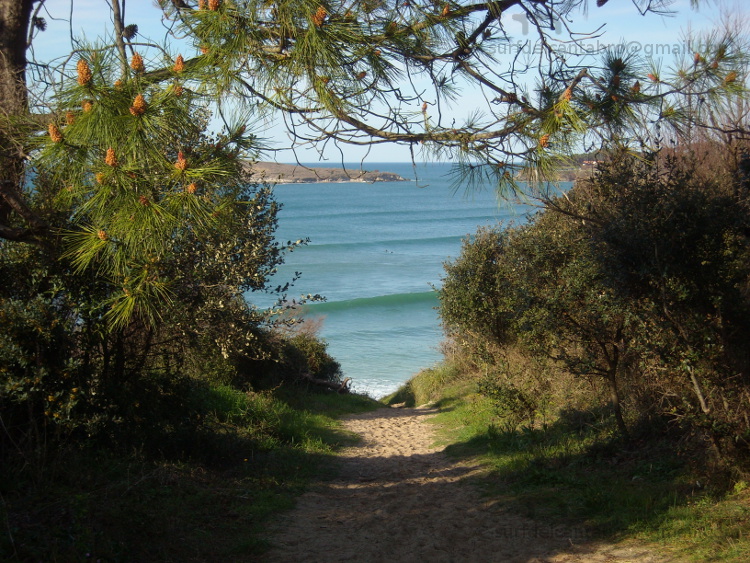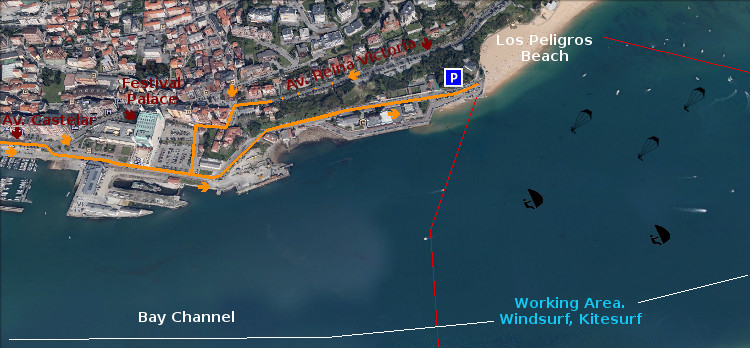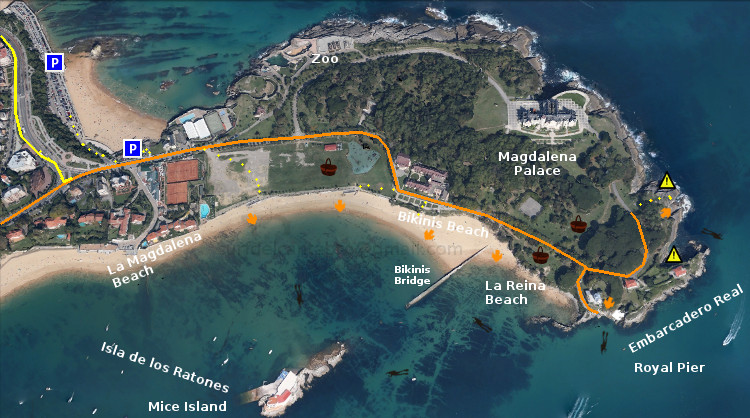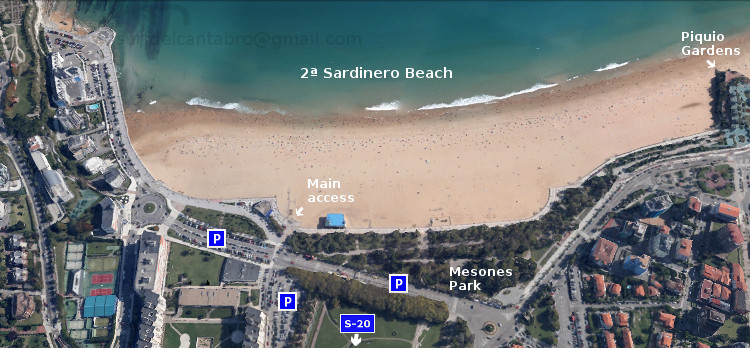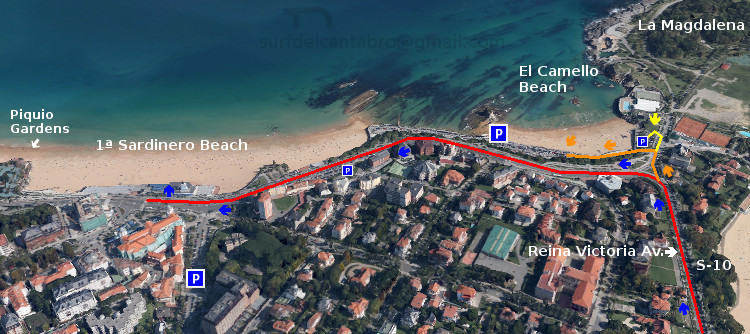Playa de Mataleñas. Una cala dentro de Santander
![]() La playa de Mataleñas está situada en la ciudad de Santander. Se encuentra emplazada entre Cabo Menor y Cabo Mayor. Su arenal tiene 125 metros de longitud y una anchura aproximada de 40 metros. Flanqueada por acantilados que esculpe el Mar Cantábrico, estas barreras naturales acompañan a la cala 250 metros antes de llegar a mar abierta.
La playa de Mataleñas está situada en la ciudad de Santander. Se encuentra emplazada entre Cabo Menor y Cabo Mayor. Su arenal tiene 125 metros de longitud y una anchura aproximada de 40 metros. Flanqueada por acantilados que esculpe el Mar Cantábrico, estas barreras naturales acompañan a la cala 250 metros antes de llegar a mar abierta.
Localización : una vez situados en la ciudad de Santander, nos dirigiremos hacia la Segunda Playa del Sardinero. Desde allí cogemos dirección al Faro de Cabo Mayor. Pasado el Barrio de Valdenoja, subiendo la cuesta, al final hay un desvío a mano derecha que da acceso a un mirador desde donde contemplar parte de la Bahía de Santander y la Playa de Mataleñas.
Acceso : cuenta con un pequeño parking cercano a su escalinata de entrada. Se baja a la playa a través de las escaleras que traducen una altitud de 40 metros, hasta amenizar a nivel del mar, en un pequeño balcón abarandillado que nos presenta la cala de una forma singular.
La playa de Mataleñas es apta para el baño, ir de comida, pesca a surfcasting y el submarinismo. Sus aguas limpias y de color azul verdoso traslucen parte del paisaje submarino que puede encontrarse al bucear en la zona. Lubinas, doradas, perlas, cabras, cabrachos y agujones son algunas de las especies de peces que vamos a encontrar. Acompañados de crustáceos y algas rodeados por cuevas y roca tallada por el Cantábrico.
La playa de Mataleñas se comunica con los siguientes puntos : Faro de Cabo Mayor, Cabo Menor, Parque de Mataleñas, recorrido periférico del Campo de Golf de Mataleñas, El Sardinero. Es por ello que se convierte en una zona ideal para realizar rutas de senderismo con diversos recorridos.
![]()
![]()
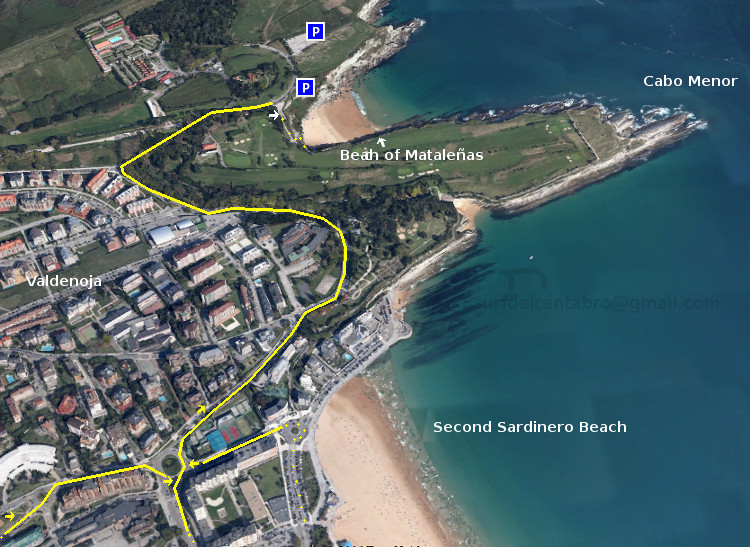
![]()
Beach of Mataleñas. A cove within Santander
![]() The Beach of Mataleñas is located in the city of Santander. It is placed between Cabo Menor and Cabo Mayor. Its arenal has 125 meters in length and a width of approximately 40 meters. Flanked by cliffs that sculpts the Cantabrian Sea, these natural barriers accompany the cove through 250 meters before arriving to open sea.
The Beach of Mataleñas is located in the city of Santander. It is placed between Cabo Menor and Cabo Mayor. Its arenal has 125 meters in length and a width of approximately 40 meters. Flanked by cliffs that sculpts the Cantabrian Sea, these natural barriers accompany the cove through 250 meters before arriving to open sea.
Location : once placed in the city of Santander, we go toward the Second Sardinero Beach. From there take the road to the Lighthouse Cabo Mayor. Then the last neighborhood, Valdenoja. Just up the hill, at the end, there is a diversion on the right hand which gives access to a vantage point from where you can watch part of the Santander Bay and the Beach of Mataleñas.
Access : account with a small parking close to its entrance staircase. You can arrive to the beach through the stairs. That translate an altitude from 40 meters to sea level. At the end, an small balcony balustraded presented to us the cove in a singular way.
The beach Mataleñas is suitable for the bathroom, picnic, surfcasting and scuba diving. Its clean waters and greenish blue color show part of the underwater scenery that can be found when diving in the area. Sea Bass, golden, pearls, goats, scorpion fish and agujones are some of the species of fish that we are going to find. Accompanied by crustaceans and algae surrounded by caves and rock carved by the Cantabrian Sea.
The beach of Mataleñas communicates with the following points: Lighthouse Cape Mayor, Cape Menor, Mataleñas’s Park, peripheral road of Mataleñas’s Golf course, The Sardinero. It is for it that turns into an ideal zone to realize routes of trekking with diverse tours.
![]()
